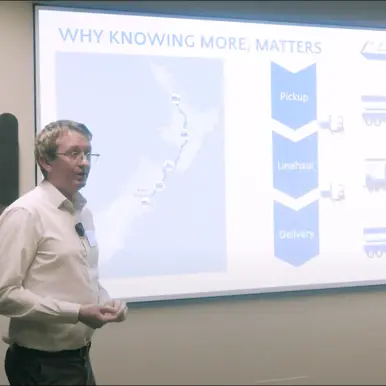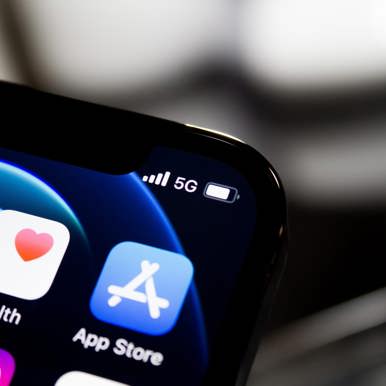The hype around 5G has been hard to miss and recently reached fever pitch at the Snapdragon Tech Summit in early December. This was the first time that mainstream phone makers announced solid plans to release handsets with 5G support along with more analysis about what was possible with this new network technology.
What is 5G?
5G is the latest major iteration of the mobile communication standard. Aside from improved data speeds, 5G has been designed to be much more efficient in the way it uses the radio spectrum assigned to it, this is achieved by using much more densely populated cell sites operating at a much high frequency. Consequently, this improves the available latency so devices using 5G can achieve responses in the 1ms to 4ms range, a significant improvement over current 4G/LTE technology. Another result of the increased density is that the network can support many more connected devices than current technology which could be an advantage in scenarios such as sporting events and concerts. 5G is also designed to operate well at speeds up to 500 km/h.
Where will it be used?
Despite the hype to the contrary, mobile phones users are unlikely to see any major benefits from using 5G, at least not in the near future. These users already benefit from very good performance over 4G/LTE (depending on network, density and congestion) and can easily achieve download rates of over 100Mbps and upload rates of over 40Mbps.
The prime beneficiaries will be IoT devices and technology with integrated cellular services, sensors, infrastructure, meters, and vehicles (including cars, autonomous vehicles, rail, light rail, buses). Because 5G will be deployed with quite high geographic intensity this will deliver low latency, and the transmit/receive distance will be comparatively low compared to 4G/LTE, this will assist with energy consumption and battery life.
Should I delay a phone, tablet or notebook purchase and wait for a 5G model?
No. Like all technology rollouts, 5G will take time, and likely span 10 years. We expect that any decent level of 5G rollout and penetration will take much longer than we experienced with 4G/LTE. Because of the deployment density required this will necessitate a large number of new cell sites. To deliver its claimed performance promises sites may need to be deployed every 100m. In densely populated areas this may mean a site on every street corner. This means major planning and regulatory hurdles to be overcome.
Early 5G handsets will ship with the first generation 5G chipsets which may not be as well optimised as future versions. The second generation 4G chipsets are already scheduled for late 2019. These second generation versions will bring energy consumption and coverage optimisation.
In short, enjoy what you have available now. 5G compatibility may be something to look for if you’re shopping for phones, tablets and notebooks in the 2020+ timeframe.
Does 5G make fibre connections redundant?
No, not yet. 5G can theoretically deliver 10Gbps. Although It’s unlikely these speeds will ever be seen in the real world. Speeds drop to more modest 400Mbps within 200m of a site. The number of simultaneous users will bring these speeds down further. Fibre, on the other hand, is not affected by congestion (the wireless spectrum is a finite resource), and can easily deliver 1Gbps to the home or business today, with 10Gbps residential plans being offered in New Zealand by the end of 2018.
Not the holy grail
5G’s biggest benefit, site density, is also its Achilles heel. Because it is fundamentally built around a high-density rollout, this makes the build long, complicated and expensive. It’s not just the deployment of sites every few hundred meters that is daunting, but the backhaul for these sites too. In very dense areas, these will most likely need to be fibre-fed further complicating the rollout.
5G being rolled out to areas other than dense urban environments is very unlikely due to the build cost. Even today, not all areas are well served by 4G coverage and still rely on 3G UMTS networks in more remote places.
In order to make the 5G buildout economic, expect carriers to pool resources and share 5G infrastructure in some areas.
A solution looking for a problem?
For mainstream mobile phone users, 5G’s biggest problem is that it is really a solution looking for a problem. Unlike the transition from 2G, 2.5G and 3G, where there were very noticeable improvements in performance, in most countries 4G/LTE deliver very good speeds for all applications we use today, including 4K video streaming -- if your data cap can accommodate that. For many, it’s hard to imagine many scenarios where your phone and apps could benefit from more performance.
Because the benefits for users will be negligible at best, unnoticeable at worst, carriers will likely be unable to charge for 5G access like they did in the move from 3G to 4G. This puts further strain on the investment and return model faced by carriers when evaluating a 5G rollout.
Conclusion
Whilst 5G is a major architectural change from a network deployment and engineering perspective, it will feel more incremental for users. The potential is huge, especially for connected smart devices and embedded technology. We expect it will be a long haul, likely 10 years, before it reaches its true potential.
It’s an exciting long-term technology but don’t let the hype affect your buying decisions today.








